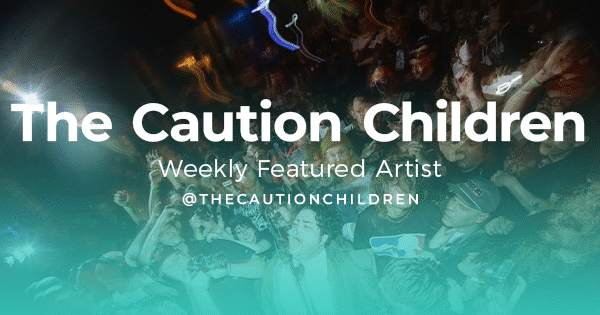It all began about eleven years ago. Well, not all, but you get it. Someone recommended I should listen to Corde Oblique, stating that I’d absolutely like them. I was obviously skeptical, especially given that at the time, most of my listening habits tended to revolve around metal of some kind. I remember one particular thing distinctly as if it was just the other day – my first listen. It was “Cantastorie”, the first track from Volontà d’Arte. I recall being engulfed by a warm and soft feeling of a kind I can’t say I’ve encountered before in music up to that point. To say that I fell hard for Corde Oblique would be something of an understatement. I mowed through their catalogue in a matter of days, and I was hooked. So hooked that here we are, over a decade later, and I’m still as attuned to the band’s output as ever.
Relatively recently, I was thinking that I’ve never met anyone who knew the band upon mentioning them, save for barely a handful of exceptions. So why not start a conversation with the heart of this beautiful project in order to bring some welcome attention in this direction? Thus, today I’ll be showcasing a brisk yet enlightening conversation with Riccardo Prencipe, main composer, guitarist, and lyricist for Corde Oblique.
Before delving into that, though, I’d like to take up some of this space by giving you some kind of idea about the music of Corde Oblique if you’ve never heard of them. I think that’d be necessary as an introductory passage, since their work spans seven albums, with an upcoming eighth to follow. It’s not exactly bite-sized, and while for the most part they adhere to the same stylistic ballpark, there are ample differences between them and each carries something that’s ultimately a unique voice.
Right from their debut Respiri, released in 2005, they established the core of their sound. This took the form of a blend between neo-folk, characterized chiefly through its classical style of guitar playing, neoclassical music, and an aesthetic dash of what later came to be known as ethereal darkwave. Mind you, this is a very sterile and strictly stylistic/technical description, which doesn’t do proper justice to what we’re hearing.
Over the course of the sequels Volontà d’Arte, The Stones of Naples, and A Hail Of Bitter Almonds, the band further refined its sound, exploring the corners of this mix of styles meticulously and in depth. There’s an inescapable rock-oriented mindset, particularly of the progressive kind, which tends to escape into the structures of the songs sometimes too, and it’s part of what makes things so engaging across what is virtually the same voice. Emotionally speaking, we’re given a canvas over which the entire might, warmth, and lush wistfulness of the Mediterranean is painted with passion and care. It’s a highly evocative mood, bordering on a cinematographic kind of attitude, making the music all the more immersive and lifelike.
Per la Strade Ripetute distils the established canon ever further, offering one of the band’s most compelling works, making one wonder how much better can it all get? I Maestri del Colore doesn’t necessarily answer this question, but it does bring us to the edge of our seats with its opening track “Suono su tela”, which straight up gives in to that rock influence but tonally as well, showcasing the fact that this cemented sonic hallmark can still be subject to more drastic changes. Nevermind the unbelievable surprise of it all given the present track record.
Now, the band’s latest record, The Moon is a Dry Bone, takes something from that surprise and adds a hearty dose of progressive experimentation, leaving me in all the shades of being surprised, as I’m sure it left all the other listeners and fans. I had high expectations of it and I received it with mixed feelings, as you can read here, though ultimately, I cherish it as another shining opus in Corde Oblique’s oeuvre.
I’m going to go back to the top, chronologically, and see what Riccardo Prencipe has to say about how it all began for Corde Oblique, or maybe even before that:
‘Before Corde Oblique I started a different project in 1999, named Lupercalia. It was very neo-gothic and neo-medieval. We released the first album, Soehrimnir with World Seprent Distribution in 2000 and the second, Florilegium with Equilibrium Music in 2004 and performed in a few festivals in the Netherlands. Corde Oblique started in 2005 as a solo project, but in time it became a real band, and nowadays all members feel as a part of it. The only difference is that there are some featuring through every album. Rita Saviano, Umberto Lepore, Edo Notarloberti and Alessio Sica are those who currently make our songs real and personal with their arrangements.‘
From what I gathered, it seems that the band is more or less a revolving door of musicians. It seems that Prencipe is the sole constant in the project. Alfredo Notarloberti, Luigi Rubino, and Caterina Pontrandolfo are some of the musicians I’ve seen reappear the most on Corde Oblique albums – at least more than the rest. This begs the natural question as to why would it be like this?
‘Indeed, Caterina Pontrandolfo, Luigi Rubino and Edo are often part of our albums. They all have a great artistic personality and I am grateful for their contribution and taste. We have also been friends for almost 20 years. I like to write music for/with many voices and for/with many musicians. However, the live lineup has been the same for some years now.‘
It would appear that Prencipe is at the heart of most compositions as well as lyrics, although to me this wasn’t exactly clear from the album liner notes, so I needed to find out more precisely.
‘Yes, I am used to composing lyrics, main melody, and harmonies for most of the songs. But, when we go in the studio, the actual personality of the songs comes out through arrangement of the entire band. They are experienced musicians and they just add so much with their creative style. I also like to include one cover song in every album. We love to transform rock/metal songs in something very different. Take for example “Flying” from The Stones of Naples which is an Anathema cover, or “Jigsaw Falling Into Place” from A Hail of Bitter Almonds which is a Radiohead cover.‘
Then, naturally, one would ask what are the potential points of inspiration for the creative process. In this case it’s deceivingly simple:
‘I try to come back to a state of pure instinct, like a kid, I try to disarm myself from all things that I learned and from my knowledge. Knowledge is an important thing, but you must learn to forget it in some moments and go back to your primitive and Dionysian instinct. I am also working on an art history book, but still with a creative attitude. My biggest fear is that my creativity will eventually fade out, I wish it will last for as long as possible.‘
What about the lyrical side? I couldn’t find proper translations for most lyrics, as I either can’t find them or they’re only in Italian; although, with the few for which I did manage to find translations, it seemed to me that there’s a highly metaphoric, poetic, and poignant essence to them, which works wonderfully with the music. Other times though, I’m not sure what to make of them. So, what would be more usual as well as unusual subjects approached in this sense?
‘This has been something that kept changing as time passed. In the beginning I was used to writing lyrics about art and archeological sites that I have been visiting more and more in my life. I am an art history teacher, so it’s a big part of my life. By aging, I also moved life experiences into my lyrics. It’s a good thing, to turn your private experiences into something that is more universal, but it’s a big deal, and is not easy for it to become true. I hope I will be able to do that one day.‘
So, it makes sense that Prencipe is an art history teacher, as he holds a Ph.D. in Art History from the University of Naples Federico II, and a degree in Art History from the University Suor Orsola Benincasa, besides a degree in classical guitar from the Conservatoire of Naples San Pietro a Majella. Now, there’s a fair number of bands that ended up playing vaguely in the same breath of neoclassical/neofolk/ethereal darkwave blend, but to me at least, it feels like no other band does it as Corde Oblique does. The uniquely warm and progressive approach to all of it is practically unheard of in this niche. Does Prencipe feel the same way?
‘Yes, maybe we are very personal and there aren’t that many bands playing this music mixture. On one side it’s fine to feel ‘unique’, on the other side though, sometimes it’s not easy to be part of a music ‘scene’ since there are so many contaminants. But we are glad that we have many faithful fans worldwide. I am glad that lot from our fans from Russia, China, Germany, Italy, and many other countries are often in touch with us and give us motivation and support. It helps a lot.‘
As I outlined above, Corde Oblique’s musical trajectory remained fairly consistent from the start and up to Per la Strade Ripetute, embracing and perfecting its identity, exploring all its corners. I Maestri del Colore and The Moon is a Dry Bone started turning some of this on its head, shifting into a novel area.
‘The last two studio albums have been very important into our music development, I think. I Maestri del Colore has been an important part of this change. I feel that some of our fans didn’t feel confident with it. But, in time, they are getting closer to it and more confident with it. Things need time, and we are in the age of brevity. I wish for this age to be a stepping stone to a deeper consciousness at a cultural level. Though I am afraid I will not live long enough to see a new renaissance.
The Moon is a Dry Bone is our most mature album. I am very satisfied about the title track as well. It was a way to express something absolutely weird and with no compromises – as I like. There are actually two versions, the first was very melodic and full of traditional chords. But, then a second one came out, more in tune with the lyrics of the song. I like it when things arrive with no effort, extreme, without thinking about context, if fans will like or not, if it fits with the album, etc. This way is the purest one.‘
I was particularly surprised when I first listened to “Suono su tela” from I Maestri del Colore. The distorted guitar was not only something wholly new for the band’s sound, but, to me at least, an unexpectedly cool element, making me wish there was more of that. That begs the question of whether this avenue will be further explored on a future release, as well as if there’s anything in the works currently.
‘The new album will have a lot of electric guitar, and distorted as well. I grow up listening to extreme metal music in the ’90s and the need to go back to my roots came spontaneously. The way I like distorted sound is always melting with Edo’s violin and with the oneiric/dreamy atmosphere of what I personally call ‘Twin Peaks style’.
Indeed, we are working on the new songs right now, the album will be probably a double EP, one neofolk and one post-rock/metal, these are the two sides of my life at the moment, and the band is working on it with extreme enthusiasm. Our new singer, Rita Saviano, is in a great state of empathy with us, and I couldn’t be happier, since the voice is very important. We will continue to feature new guests from other bands, but until things are not ready, I am not used to talk about it at more length, since I am a very superstitious man – don’t forget, I am still Italian, and, to be precise, Neapolitan!‘
Make sure to keep an eye out for updates from the band about their upcoming album, which will surely be an absolute charmer – much like its predecessors – and, obviously, dig into their works. I hope to have swayed you enough to do so, as I did with many friends and other people across time. They’re definitely worth your time, because I know that they were worth mine with peak and stuffed.
Corde Oblique is currently (as per the line-up on the latest album):
Riccardo Prencipe on guitars
Alfredo Notarloberti on violin
Alessio Sica at drums
Umberto Lepore on bass
Luigi Rubino on piano
Michele Maione on additional percussion
Carmine Ioanna on accordion
Rita Saviano handling vocals with Caterina Pontrandolfo, Denitza Seraphim, Maddalena Crippa, Andrea Chimenti, Miro Sassolini, and Sergio Panarella alongside her. You can follow them on Facebook, Spotify, Bandcamp, YouTube, and Instagram.






